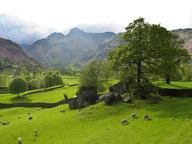Quiz Answer Key and Fun Facts
1. The great red sandstone Gothic Anglican cathedral dominates one end of Hope Street. Who designed it?
2. Opposite the Anglican cathedral is an old school, once attended by Paul McCartney and George Harrison, amongst many other notable pupils. What was this school called?
3. Diagonally across the junction from the school stands the girls' school - the 'sister' school of the boys'. Although it had a formal name, it was universally known by the name of the building which housed it. What was it called?
4. Tucked away down Rice Street, a narrow side street is one of Liverpool's quirkiest public houses. What is it called?
5. Further down Hope Street is one of the grander public houses of Liverpool - "The Philharmonic" ( so called because it is opposite The Philharmonic Concert Hall) What feature of this remarkable establishment should visitors NOT miss?
6. A small, but popular theatre stands on a corner. Originally very adventurous and avante-garde, the theatre was the starting place for many actors who went on to greater things in British theatre. What is this theatre called?
7. In Liverpool we now reach the 'other' Cathedral at the end of Hope Street. This Catholic Cathedral is properly called what?
8. An original, much larger cathedral was to have been built here. Only one part was ever completed. Which?
9. Who designed the Catholic cathedral?
10. Hope Street runs parallel to Rodney Street, itself noted in Liverpool society. Which profession practices in Rodney Street?
Source: Author
sancho_pft
This quiz was reviewed by FunTrivia editor
minch before going online.
Any errors found in FunTrivia content are routinely corrected through our feedback system.
